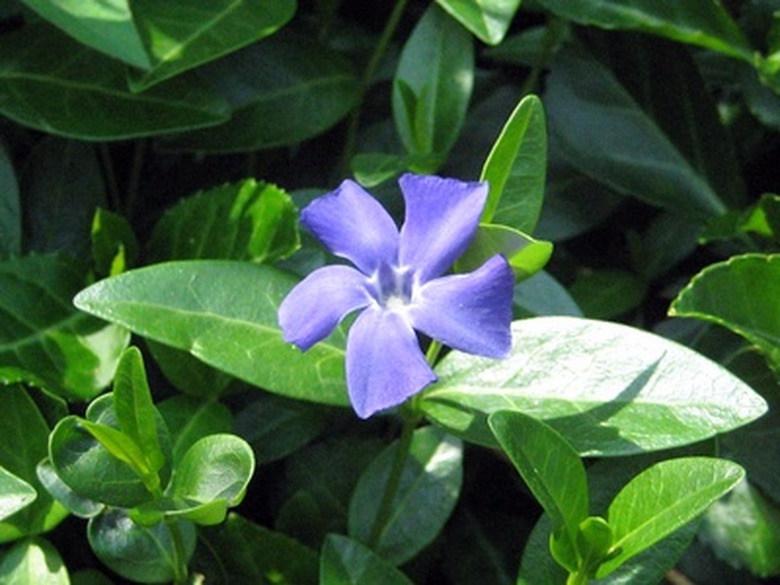Vinca Vine Care
Vinca major and minor vines are similar in appearance, differing only in the color of leaves and blossoms. The Vinca major vine, a tropical or subtropical vine hardy in USDA zones 7 to 9, will not withstand any temperature that dips below 45 degrees Fahrenheit. The Vinca minor offers winter hardiness and returns each spring with vigor. It grows well in USDA zones 4 to 9. Both vines make a good ground cover and require the same care to flourish.
Planting Location
Choose a planting location that offers full sunlight to partial shade. The Vinca minor vine will withstand full shade but its flowering will be reduced and its growth not as abundant. Well draining soil with abundant organic content is ideal. The Vinca vine aids in stopping or preventing soil erosion in areas that are susceptible. Choose a safe planting area where children or pets will not accidentally ingest the Vinca vine, since all parts of the plant are poisonous according to Floridata.
- Vinca major and minor vines are similar in appearance, differing only in the color of leaves and blossoms.
- The Vinca vine aids in stopping or preventing soil erosion in areas that are susceptible.
Watering
All Vinca vines enjoy moist soil conditions, but once established they will easily withstand periods of drought. Place 2 to 3 inches of mulch around the plant to keep the soil moist during the heat of the summer. The mulch also helps protect the roots of the Vinca minor during cold winter months. Water the vine once a week to a depth of 1 inch.
Fertilizer
Apply 1 to 2 inches of aged manure around the Vinca plants each spring. Blossoming occurs from May to June. Adding 1 inch of bone meal to the soil in the spring can also prove beneficial to the plant. Fertilize using a 10-10-10 fertilizer after flowering. Apply according to the instructions on the label. Water the fertilizer thoroughly into the soil.
- All Vinca vines enjoy moist soil conditions, but once established they will easily withstand periods of drought.
- Place 2 to 3 inches of mulch around the plant to keep the soil moist during the heat of the summer.
Control
The Vinca vine is extremely invasive in the garden. It spreads using its stems. Each stem can spread outward up to 18 inches. Care must be taken to contain the plant to its designated area. Pulling the plant up for transplant or complete removal helps. Installing a plastic barrier also helps contain the vine's vigorous growth habits.
Canker Control
Canker diseases often afflict the Vinca vine. The plant will quickly turn brown or black, wilt and die. Prevent canker disease in the Vinca vine by mowing it after flowering. Rake away the cut stems and discard if the lawnmower does not pick them up. Mowing also stimulates the plant to produce new growth.
- The Vinca vine is extremely invasive in the garden.
